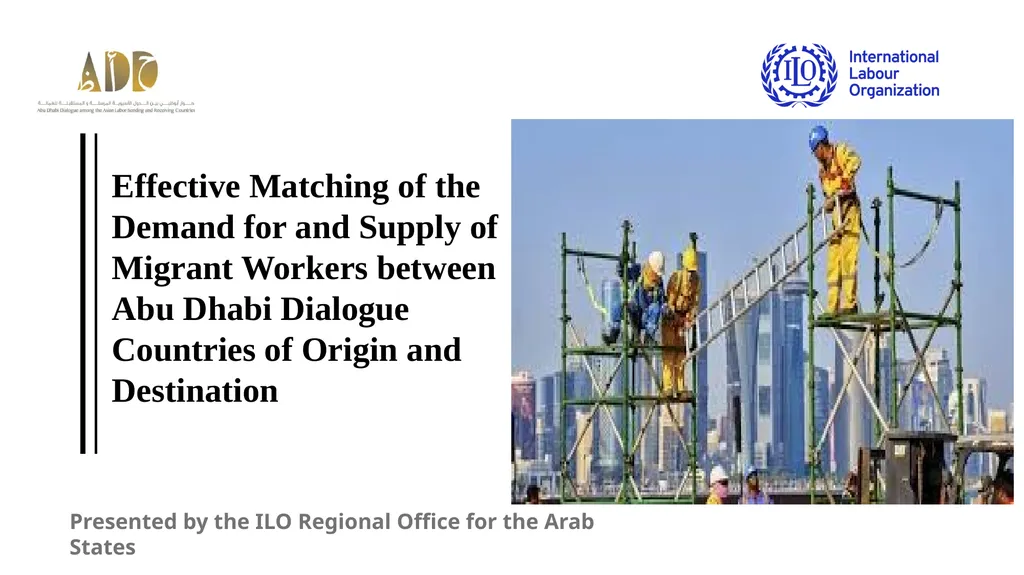
Author : alexa-scheidler | Published Date : 2025-05-10
Description: Effective Matching of the Demand for and Supply of Migrant Workers between Abu Dhabi Dialogue Countries of Origin and Destination Presented by the ILO Regional Office for the Arab States 01. Research Methodology Snapshot of Labour MarketDownload Presentation The PPT/PDF document "" is the property of its rightful owner. Permission is granted to download and print the materials on this website for personal, non-commercial use only, and to display it on your personal computer provided you do not modify the materials and that you retain all copyright notices contained in the materials. By downloading content from our website, you accept the terms of this agreement.
Here is the link to download the presentation.
"Effective Matching of the Demand for and Supply of"The content belongs to its owner. You may download and print it for personal use, without modification, and keep all copyright notices. By downloading, you agree to these terms.













